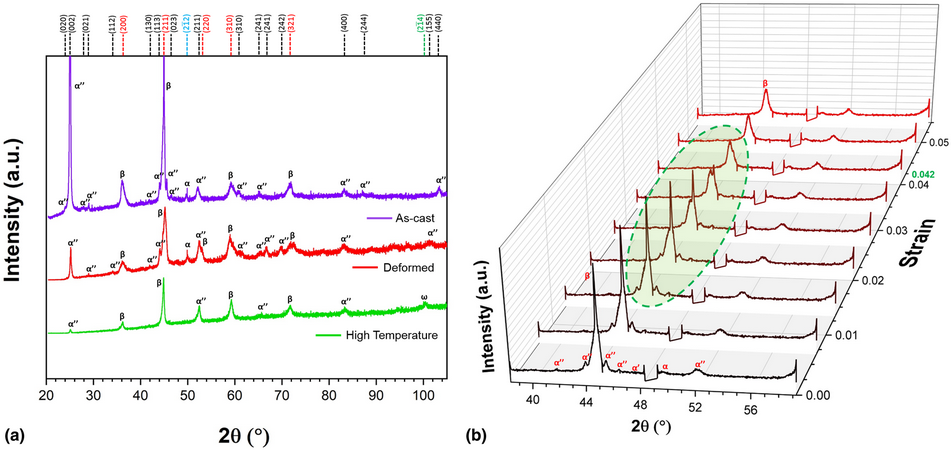Crossref Citations
This article has been cited by the following publications. This list is generated based on data provided by
Crossref.
Romero da Silva, Murillo
Gargarella, Piter
Plaine, Athos Henrique
Pauly, Simon
and
Bolfarini, Claudemiro
2021.
Influence of oxygen and plastic deformation on the microstructure and the hardness of a Ti–Nb–Ta–Zr–O Gum Metal.
Materials Science and Engineering: A,
Vol. 828,
Issue. ,
p.
142122.
Alharbi, Hamad F.
Bahri, Yassir A.
and
Sherif, El-Sayed M.
2021.
Influence of Zirconium on the Corrosion Passivation of Titanium in Simulated Body Fluid.
Crystals,
Vol. 11,
Issue. 11,
p.
1391.
da Silva, Murillo Romero
Gargarella, Piter
Plaine, Athos Henrique
Zeisig, Josephine
Pauly, Simon
Kühn, Uta
and
Bolfarini, Claudemiro
2021.
Microstructural evolution and properties of a Ti-Nb-Ta-Zr-O prepared by high-pressure torsion.
Journal of Alloys and Compounds,
Vol. 864,
Issue. ,
p.
158828.
da Silva, Murillo Romero
Plaine, Athos Henrique
Pinotti, Vitor Eduardo
Mazzer, Eric Marchezini
and
Bolfarini, Claudemiro
2023.
A review of Gum Metal: Developments over the years and new perspectives.
Journal of Materials Research,
Vol. 38,
Issue. 1,
p.
96.
Chen, Yujie
Fang, Yan
Wang, Ruixin
Tang, Yu
Bai, Shuxin
and
Yu, Qian
2023.
Achieving high strength and ductility in high-entropy alloys via spinodal decomposition-induced compositional heterogeneity.
Journal of Materials Science & Technology,
Vol. 141,
Issue. ,
p.
149.
de Carvalho, Luisa Coelho
da Silva, Murillo Romero
Bolfarini, Claudemiro
and
Gargarella, Piter
2024.
The Influence of Aging Treatment on a Ti-Nb-Ta-Zr-O Alloy Processed by High-Pressure Torsion.
JOM,
Vol. 76,
Issue. 9,
p.
5302.
Kanapaakala, Gouthamaraj
and
Subramani, Venkatesan
2024.
A comprehensive review of Gum metal's potential as a biomedical material.
Proceedings of the Institution of Mechanical Engineers, Part L: Journal of Materials: Design and Applications,
Vol. 238,
Issue. 7,
p.
1200.
Sherif, El-Sayed M.
2024.
A comparative study on the corrosion of pure titanium and titanium–12%zirconium alloy after different exposure periods of time in sodium chloride solution.
AIP Advances,
Vol. 14,
Issue. 3,
Sherif, El-Sayed M.
2024.
Beneficial effect of 4% Ta addition on the corrosion mitigation of Ti–12% Zr alloy after different immersion times in 3.5% NaCl solutions.
Science and Engineering of Composite Materials,
Vol. 31,
Issue. 1,
Silva, R.
Silva, J.
Viana, C.C.
Afonso, C.R.M.
Hammer, P.
Magalhães, D.C.C.
Plaine, A.H.
and
Rovere, C.A.D.
2025.
Optimizing strength and corrosion resistance of the metastable β-alloy Ti–35Nb–7Zr–5Ta alloy by equal-channel angular pressing.
Journal of Materials Research and Technology,
Vol. 35,
Issue. ,
p.
2055.




